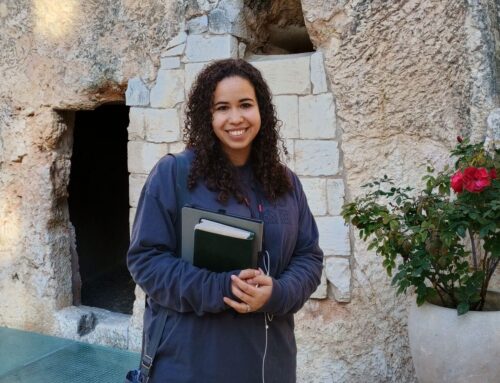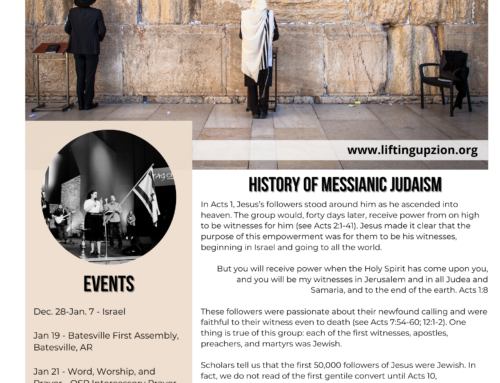During the first few centuries AD, as gentile believers outnumbered Jewish believers, the relationship between the two groups changed. Especially significant was the destruction of the Temple in 70 AD. Some gentile believers came to interpret the destruction of the Temple as the Lord casting off the Jewish people.
Nevertheless, some believing groups met in relative unity during the first four centuries AD. For example, during the third century in Syria, the Didascalia Apostolorum indicates that gentile believers joined with Jewish believers to pray for the salvation of the Jewish people.
On the other hand, other groups of gentile Jesus followers persecuted the Jews, including Jewish believers in Jesus. Saint Ignatius of Antioch said in 110 AD, “It is absurd to profess Christ with the lips and at the same time to practice Judaism.”
“It is absurd to profess Christ with the lips and at the same time to practice Judaism.”
-Saint Ignatius of Antioch
Once Constantine came to power, it became virtually impossible for Jews to believe in Jesus and maintain their Jewish identity. In fact, it was punishable by death to profess faith in Jesus and practice Jewish customs. Therefore, there is little evidence of Messianic Judaism after the fourth century AD.
There has, however, been a continuous remnant of Jewish believers in Jesus across the span of history from the first century AD until today. They sacrificed their Jewish traditions and communities and assimilated into the larger gentile culture.
Three significant societal changes paved the way for things to shift: the Reformation, the revolution of Bible translation, and Gutenberg’s printing press invention. All of these changes occurred around the sixteenth century and allowed people to read the Bible in their own language instead of only learning from priests in Latin. The result was a transformation in Bible interpretation.
Not long after these innovations, in the 18th century, Count Nikolaus Ludwig von Zinzendorf began a 24-hour prayer ministry that ended up lasting 100 years. He became convinced that Romans 1:16 provided the right framework for world missions: that the gospel should go to the Jew first.
For I am not ashamed of the gospel, for it is the power of God for salvation to everyone who believes, to the Jew first and also to the Greek.
Romans 1:16
In 1740, he added prayers for the salvation of Israel to his church’s liturgy. He started a congregation for Jewish believers to hold to their traditional customs, including celebrating biblical feasts.
Since then, Messianic Jewish congregations have appeared across the globe, including in Europe, Israel, the United States, and beyond. The movement continues to grow globally.
In Israel, the movement has tripled in the last twenty years. In 1999, Israel had 81 confirmed Messianic fellowships with approximately 5,000 regular attendees. In 2020, Israel had 280 confirmed Messianic fellowships with 15,323 confirmed regular attendees.
The Lord is moving among the Jewish people and opening their eyes to the reality that Yeshua (Jesus) is their promised Messiah.
Let’s continue to partner with the Lord’s work among the Jewish people by praying for the salvation of Israel and contributing financially to the Messianic Jews.






